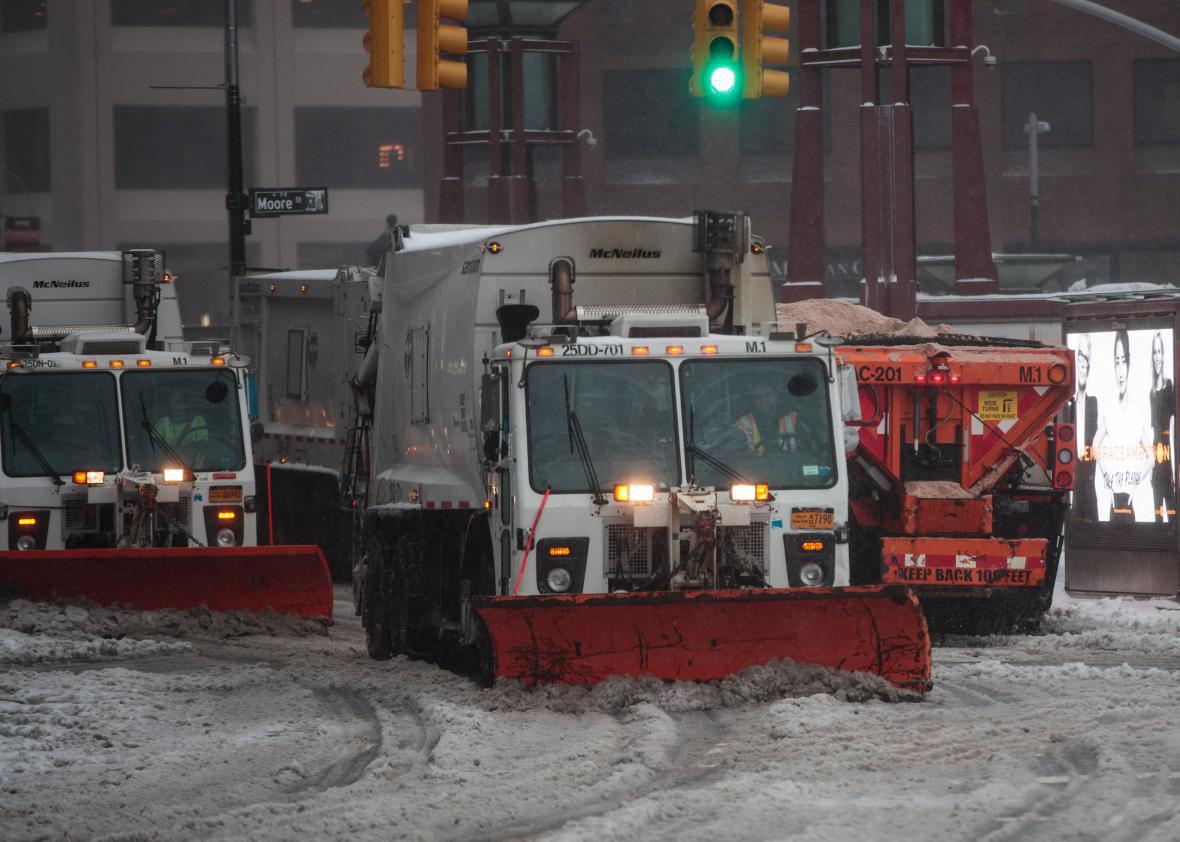With a week to go until spring, the 50 million residents of the Northeast megalopolis have greeted Tuesday’s snowy, sleety nor’easter with mixed emotions.
On the one hand, there are new leaves on the rose bushes, the daffodils are pushing up, and a giant snowstorm feels a bit out of place.
On the other, no winter feels complete without a big blizzard. And as the big storm bookends a winter of extreme warmth—February was 7.3 degrees warmer than average, and cities set 11,743 record highs (vs. just 418 record lows)—it feels like a tonic for the fever of the Anthropocene.
But there’s one reason to feel good about a winter with no snow: no salt. For a snowbound lunch today, you may notice how a little salt can change the flavor of a big bowl of soup. That’s essentially what’s happening to the wintry regions of the third soup bowl from the sun each year, as we dump millions of tons of sodium chloride on the roads to melt snow. In 2014, the U.S. used 24.5 million tons of the stuff on roads, compared with just 1.76 million tons for food processing. That’s more than twice as much road salt as we used in the ’80s, thanks in part to the high asphalt-per-capita ratio of urban sprawl. But salt use is still a response to the weather, and when all is said and done, a year when cities from Chicago to Syracuse haven’t had much snow will probably be one of the slower years for the old salt supply chain.
That’s good, because road salt—while a low-cost solution to the “bare pavement” demands of American drivers after the Second World War—is bad for plants, fish, and drinking water. (It’s not great for cars, either.) In Chicago, a heavy-handed deicing of Interstate 88 during the 1970s killed a grove of 50 dogwoods at the Morton Arboretum. Now, gardeners plant salt-resistant species closer to the road.
Salt lingers. In one study, Minnesota researchers found that 70 percent of salt applied to roads stayed in the local watershed. The United States Geological Service reports that “chloride concentrations in the northern United States increased substantially over time with average concentrations approximately doubling from 1990 to 2011, outpacing the rate of urbanization in the region.” About 30 percent of rivers in urban areas of the Northern United States spend 100 days a year, on average, with salt levels above EPA standards.
It’s been a warm winter. But a least it hasn’t been a salty one.
